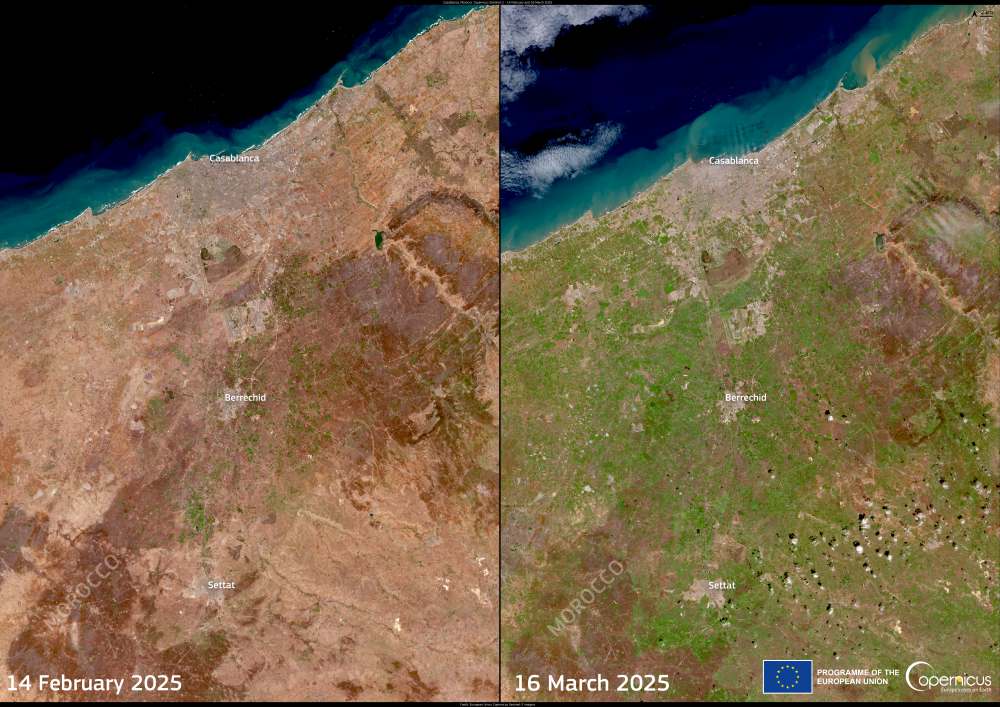A dramatic shift in Morocco’s landscape is visible in new Copernicus Sentinel-2 satellite images taken between February 14 and March 16, 2025. What was once dry, parched terrain around Casablanca, Berrechid, and Settat has turned lush green, reflecting the impact of an unusual surge in rainfall.
Between September 1, 2024, and March 19, 2025, Morocco received 113.9 mm of rain — nearly double the previous year’s total, though still below the long-term average. Since February 22, precipitation has exceeded seasonal norms by 130%, boosting reservoir levels and replenishing water supplies. The total water inflow from September to March reached 2.98 billion cubic meters, a 57.5% increase from the previous year, helping raise dam storage from 27% to 36% by March 20.

This rainfall has brought much-needed relief to farmers, improving conditions for fruit trees, easing irrigation demands, and reducing livestock feed costs. The shift highlights the crucial role of satellite data in monitoring climate trends and managing water resources in drought-prone regions.
Featured image credit: European Union, Copernicus Sentinel-2 imagery



